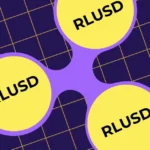
On September 11, Bitcoin mining difficulty soared to an unprecedented 92.67 trillion, reflecting a 3.04% increase in just 24 hours. This spike underscores the increasing competition among miners. Bitcoin Magazine publicized this notable milestone on Twitter.
What Does History Tell Us?
The historical data of Bitcoin mining difficulty reveals a series of fluctuations. This metric gauges the level of difficulty miners encounter when seeking to validate the next block. As difficulty escalates, more computing power is required for successful Bitcoin mining, hinting at heightened competition. Access COINTURK FINANCE to get the latest financial and business news.
How Does Difficulty Impact Profitability?
Mining difficulty, in conjunction with Bitcoin prices, significantly influences miners’ profitability and return on investment. With Bitcoin’s hash rate and adoption considerably increasing in 2024, the difficulty metric has shown an upward trend. This rise signals increased competition as more miners enter the fray for limited block rewards.
Key Takeaways
Concrete conclusions can be drawn from the data:
- An increase in mining difficulty is indicative of heightened competition among miners.
- The higher difficulty levels contribute to enhanced network security and decentralization.
- Despite market challenges, the demand for Bitcoin block rewards remains strong.
- The difficulty adjustment algorithm maintains a steady issuance of new Bitcoins, making it a more predictable investment compared to fiat currencies.
Bitcoin’s difficulty adjustment algorithm, embedded within its code, regulates the pace at which mining competition evolves. By aiming for a block discovery every 10 minutes, it ensures a consistent flow of new Bitcoins, making it easier to predict the cryptocurrency’s inflation rate. This predictability is particularly attractive to investors, contrasting with fiat currencies that are often influenced by central bank policies.
The significant rise in Bitcoin mining difficulty is largely viewed as a positive development for the network’s security and decentralization. With intensified miner competition, the demand for block rewards continues to grow, further cementing the network’s robustness. The algorithm’s ability to maintain a regular issuance of new Bitcoins enhances its appeal as a stable and reliable investment option.
Disclaimer: The information contained in this article does not constitute investment advice. Investors should be aware that cryptocurrencies carry high volatility and therefore risk, and should conduct their own research.











